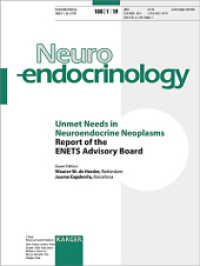- ホーム
- > 洋書
- > 英文書
- > History / World
Full Description
Havana in the 1550s was a small coastal village with a very limited population that was vulnerable to attack. By 1610, however, under Spanish rule it had become one of the best-fortified port cities in the world and an Atlantic center of shipping, commerce, and shipbuilding. Using all available local Cuban sources, including parish registries and notary, town council, and treasury records, Alejandro de la Fuente provides the first examination of the transformation of Havana into a vibrant Atlantic port city and the fastest-growing urban center in the Americas in the late sixteenth century.De la Fuente argues that Havana was much more than a port servicing the Spanish imperial powers. Analyzing how slaves, soldiers, merchants, householders, and transient sailors and workers participated socially, economically, and institutionally in the city, he shows how local ambitions took advantage of the imperial design and how, in the process, Havana was turned into a Caribbean trading center with a distinctly Mediterranean flavor. By situating Havana within the slavery and economic systems of the colonial Atlantic, de la Fuente also contributes to the growing focus on port cities as contexts for understanding the early development of global networks for economic and cultural exchange.






